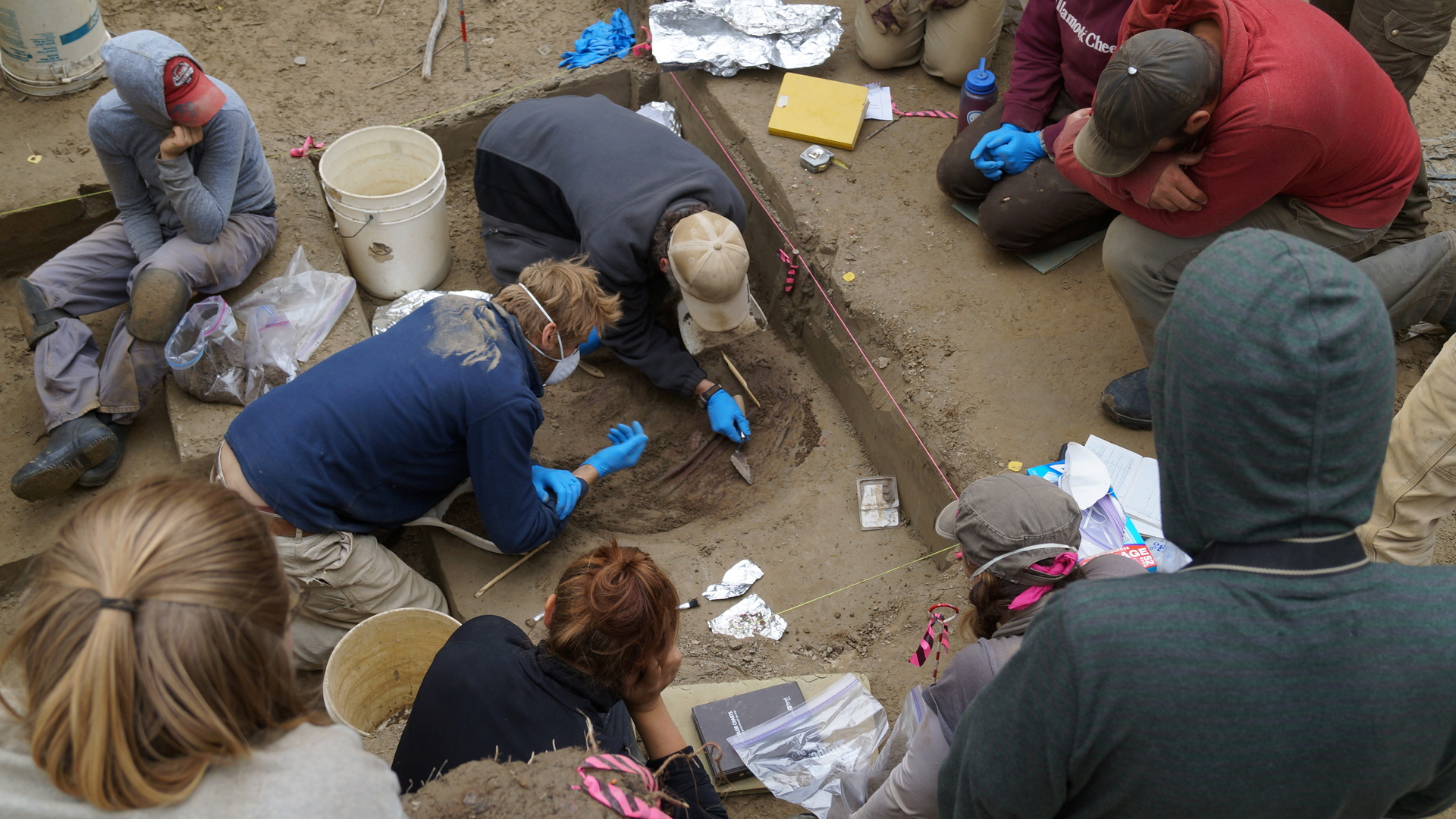
Ancient DNA extracted from the skull of a six-week-old baby girl whose 11,500-year-old remains were unearthed in a burial pit in central Alaska is helping scientists resolve long-standing controversies about how humans first populated the Americas.
Scientists said on Wednesday a study of her genome indicated there was just a single wave of migration into the Americas across a land bridge, now submerged, that spanned the Bering Strait and connected Siberia to Alaska during the Ice Age.
The infant — named “sunrise girl-child” (Xach‘itee‘aanenh T‘eede Gaay) using the local indigenous language — belonged to a previously unknown Native American population that descended from those intrepid migrants, the researchers added.
“The study provides the first direct genomic evidence that all Native American ancestry can be traced back to the same source population during the last Ice Age,” University of Alaska Fairbanks archaeologist Ben Potter said.
The remains of the infant — part of a hunter-gatherer culture that hunted bison, elk, hare, squirrels and birds and caught salmon — were unearthed in 2013 at a prehistoric encampment in Alaska’s Tanana River Valley about 50 miles (80 km) southeast of Fairbanks.
Our species first arose in Africa roughly 300,000 years ago, and later spread around the world. The researchers studied the baby’s genome and genetic data covering other populations to unravel how and when the Americas were first populated.
A single ancestral Native American group split from East Asians about 36,000 year ago and thousands of years later crossed the land bridge, they said. This founding group diverged into two lineages about 20,000 years ago.
The first lineage trekked south of the huge ice caps that covered much of North America between 20,000 and 15,000 years ago, spreading throughout North and South America and becoming the ancestors of today’s Native Americans.
The second was the newly identified population called Ancient Beringians who included the infant. They eventually disappeared, perhaps absorbed into another population that later inhabited Alaska.
Some scientists previously hypothesized about multiple migratory waves over the land bridge as recent as 14,000 years ago.
The girl was found alongside remains of an even-younger female infant, possibly a first cousin, whose genome the researchers could not sequence. Both were covered in red ochre and surrounded by decorated antler tools.
“Even the one that got sequenced was a huge challenge due to poor DNA preservation,” said Eske Willerslev, director of the University of Copenhagen’s Centre for GeoGenetics.
The research was published in the journal Nature.
More Must-Reads from TIME
- Why Biden Dropped Out
- Ukraine’s Plan to Survive Trump
- The Rise of a New Kind of Parenting Guru
- The Chaos and Commotion of the RNC in Photos
- Why We All Have a Stake in Twisters’ Success
- 8 Eating Habits That Actually Improve Your Sleep
- Welcome to the Noah Lyles Olympics
- Get Our Paris Olympics Newsletter in Your Inbox
Contact us at letters@time.com